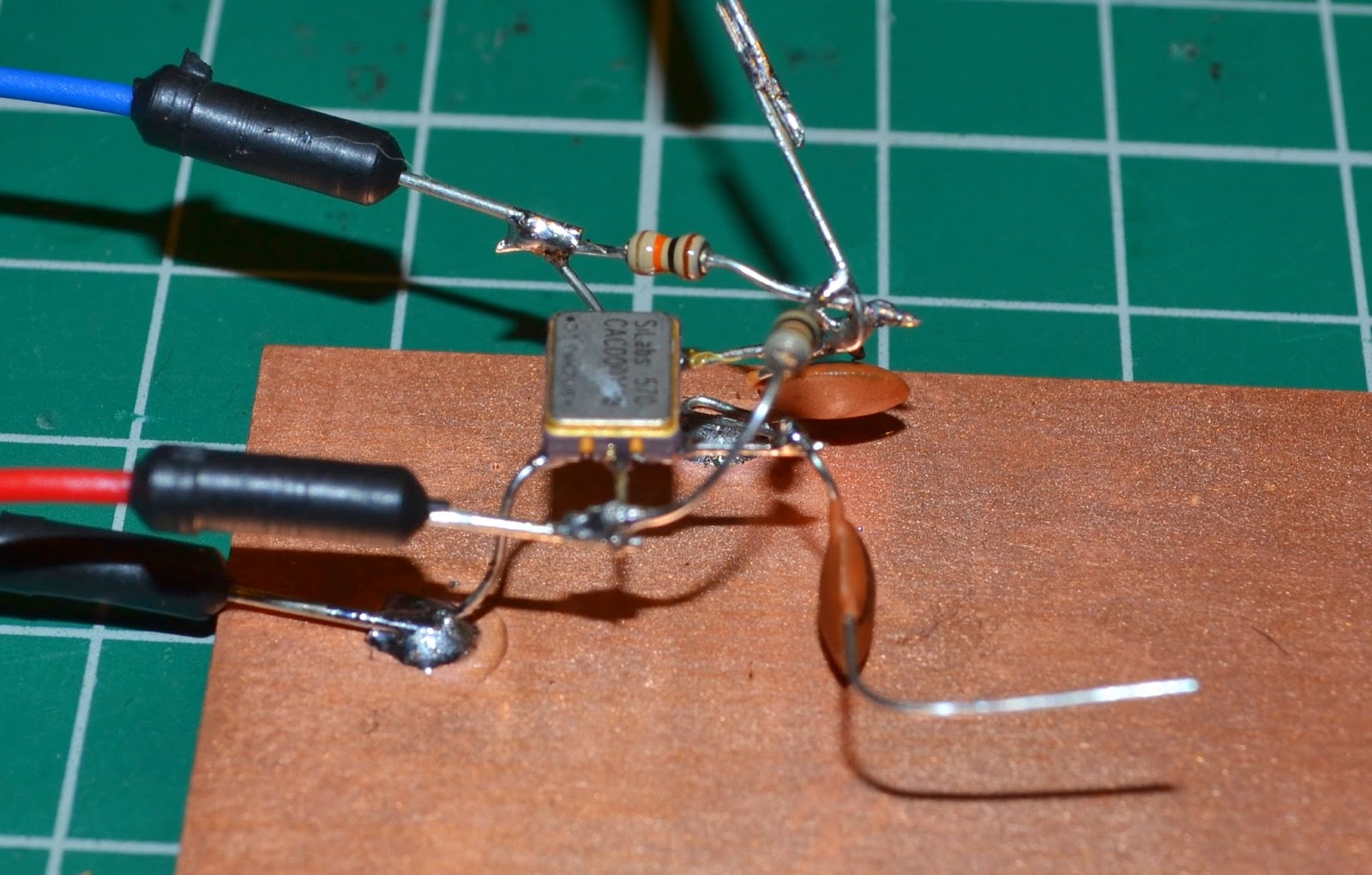Well,
In an attempt to finish up my Minima tranciever, I have today been making the linear amplifier to follow the gubbins we have so far.
The Author has used this:
http://www.hfsignals.org/index.php/File:Qrp-linear.png
and I saw no reason not to follow suit.
Here's what the linear looks like right now:
Mine is built with 2N3053s (because I had some). I had a spot of bother getting the correct output from T2, this should produce 2 equal amplitude but out of phase signals. I eventually managed to make something that seemed to work, the output of T2 looks like this:
and the output of the final transformer after the 4 finals looks like this into a dummy load:
So, I make 56V peak to peak about 7.8 watts, so I suspect I am driving the amplifier a bit hard with my sig gen and attenuator set up. I also think I have a bit of a tendency for the finals to oscillate.
So, we will have to see. The next bit I need to do is understand the band selection outputs from the Minima software - I am sure these are designed to allow me to switch LPFs after the linear, which I need to do as the linear will have to be followed by suitable filters to remove any harmonic content.
Good progress though, egh?
In an attempt to finish up my Minima tranciever, I have today been making the linear amplifier to follow the gubbins we have so far.
The Author has used this:
http://www.hfsignals.org/index.php/File:Qrp-linear.png
and I saw no reason not to follow suit.
Here's what the linear looks like right now:
Mine is built with 2N3053s (because I had some). I had a spot of bother getting the correct output from T2, this should produce 2 equal amplitude but out of phase signals. I eventually managed to make something that seemed to work, the output of T2 looks like this:
and the output of the final transformer after the 4 finals looks like this into a dummy load:
So, I make 56V peak to peak about 7.8 watts, so I suspect I am driving the amplifier a bit hard with my sig gen and attenuator set up. I also think I have a bit of a tendency for the finals to oscillate.
So, we will have to see. The next bit I need to do is understand the band selection outputs from the Minima software - I am sure these are designed to allow me to switch LPFs after the linear, which I need to do as the linear will have to be followed by suitable filters to remove any harmonic content.
Good progress though, egh?


















































